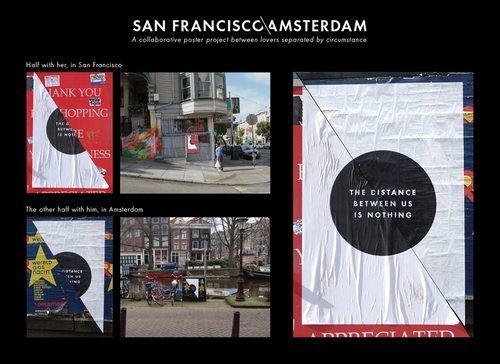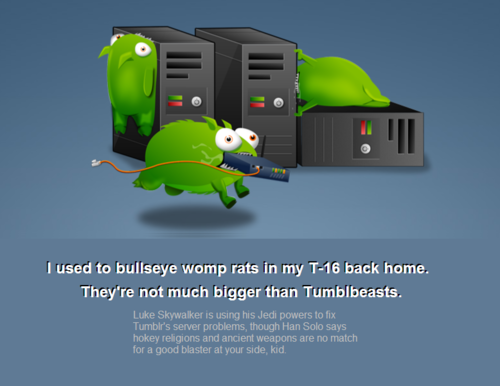Sawyer Paul's Blog, page 219
February 14, 2011
thekevinpaul:
Happy valentines day :D
thedailywhat:
Street Art of the (Valentine's) Day: "This is a...

Street Art of the (Valentine's) Day: "This is a collaborative project between a boy and a girl who, despite the geographical distance between them, remain together. They designed these posters with love, cut them in half, and posted their respective halves in Amsterdam (his home) and San Francisco (her home)."
[thanks ivan and elizabeth!]
Aw.
thedailywhat:
Street Art of the (Valentine's) Day: "This is a...

Street Art of the (Valentine's) Day: "This is a collaborative project between a boy and a girl who, despite the geographical distance between them, remain together. They designed these posters with love, cut them in half, and posted their respective halves in Amsterdam (his home) and San Francisco (her home)."
[thanks ivan and elizabeth!]
Aw.
These aren't the tumblbeasts you're looking for.

These aren't the tumblbeasts you're looking for.
February 12, 2011
Three Word Phrase, by Ryan Pequin.
Maybe I should post comics...
xkcd.
Penny Arcade! - Gawk-Blocking.
This is how a lot of people feel...

Penny Arcade! - Gawk-Blocking.
This is how a lot of people feel about Gawker's change. I'm with them. Gizmodo, Lifehacker, and Kotaku all screwed up in my RSS when the changeover happens, and every time I click on a link it asks me if I no longer want to be a member of the site. They're right. I don't.
February 10, 2011
How the Internet Gets Inside Us : The New Yorker
Of course, if you stretch out the time scale enough, and are sufficiently casual about causes, you can give the printing press credit for anything you like. But all the media of modern consciousness—from the printing press to radio and the movies—were used just as readily by authoritarian reactionaries, and then by modern totalitarians, to reduce liberty and enforce conformity as they ever were by libertarians to expand it. As Andrew Pettegree shows in his fine new study, "The Book in the Renaissance," the mainstay of the printing revolution in seventeenth-century Europe was not dissident pamphlets but royal edicts, printed by the thousand: almost all the new media of that day were working, in essence, for kinglouis.gov.
Terrific article by Adam Gopnik.








